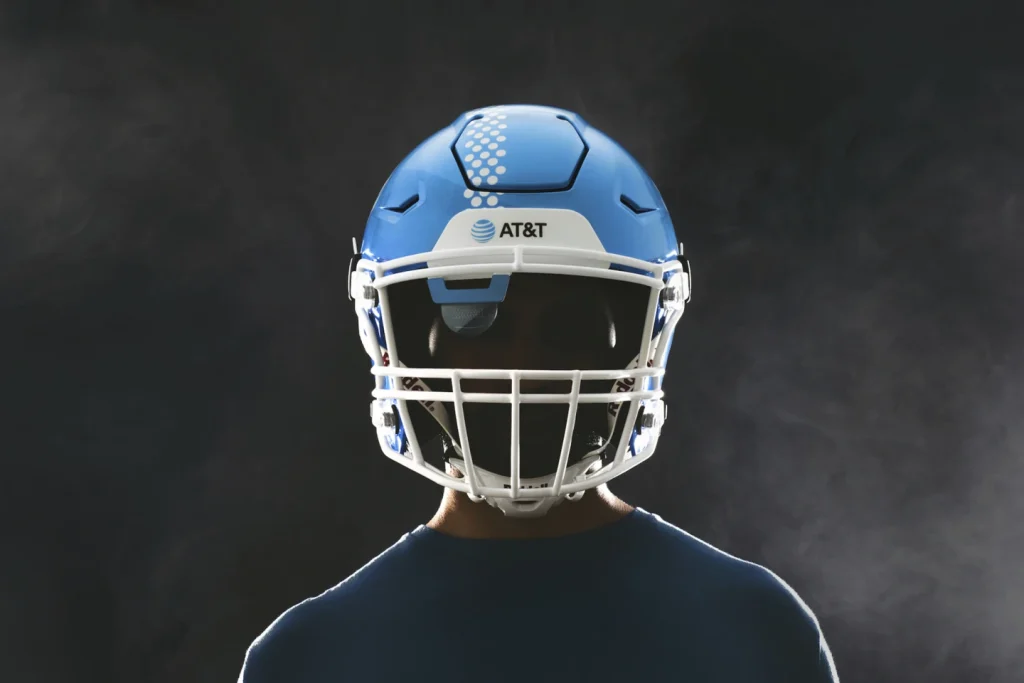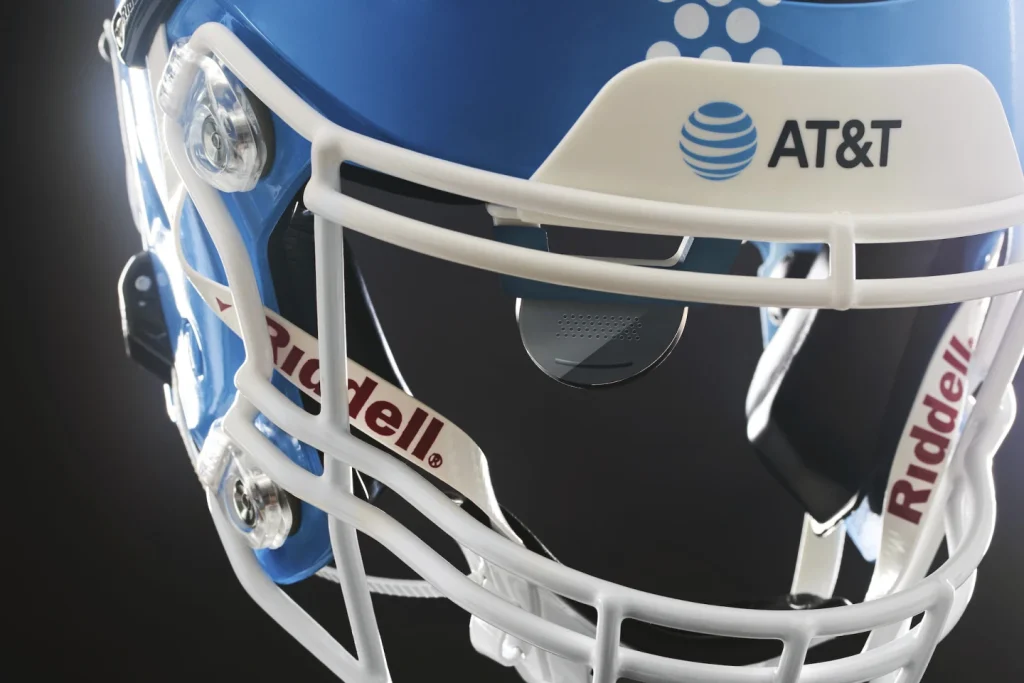AT&T and Gallaudet University, a renowned Washington-based school catering to students who are deaf or hard of hearing, have collaboratively designed a groundbreaking innovation in the field of sports equipment.
This pioneering initiative comes in the form of a football helmet specifically tailored to accommodate players who communicate primarily through American Sign Language.
The unveiling of this cutting-edge technology took place on Thursday, marking a significant milestone in the quest for inclusivity within the realm of sports.
By addressing the unique needs of deaf or hard of hearing athletes, AT&T and Gallaudet University have demonstrated their commitment to fostering an inclusive environment that allows individuals of all abilities to actively participate and excel in sports.
This collaboration serves as a testament to the power of technological advancements in breaking down barriers and promoting equal opportunities for all.
The utilization of technology in sports has increasingly become a focal point in enhancing the performance and strategies of teams.
One such innovative development is the integration of tablets and display screens into the game, enabling coaches to call plays and communicate with players more efficiently.
This advancement was recently demonstrated by Gallaudet, a Division III team, as they were granted permission by the NCAA to implement a cutting-edge helmet system during their game against Hilbert.
With this system, coaches can now transmit play calls to a tablet on the sideline, which then visually appears on a small display screen inside the quarterback’s helmet.
This technological integration not only revolutionizes the way plays are communicated but also provides a significant advantage in terms of real-time decision-making and adaptability on the field.
By allowing coaches to directly transmit plays to the quarterback’s helmet, teams like Gallaudet can streamline their communication processes, potentially leading to improved performance and strategic execution.
In the realm of football, a sport deeply ingrained in American culture, the issue of player safety has become increasingly paramount.
As concussions and other head injuries continue to plague the game, coaches and researchers alike have been tirelessly searching for innovative solutions to mitigate the risks associated with the sport.
In this pursuit, Gallaudet coach Chuck Goldstein has recently made a bold claim, asserting that a newly designed helmet has the potential to revolutionize the game of football.
With its advanced technology and cutting-edge features, Goldstein firmly believes that this helmet will be a game-changer, significantly reducing the incidence and severity of head injuries on the field.
While this claim may seem audacious, it is important to consider the potential impact that such a helmet could have on the future of the sport.
In the realm of college football programs, there exists a commonality in how teams prepare and operate. This sentiment was echoed by Goldstein, who emphasized that their team’s workout regimen, practice routines, and competitive strategies are no different from those employed by any other program.
However, the key distinction lies in the realm of communication. When coaching a hearing team, verbal communication serves as the primary means of conveying instructions, feedback, and overall guidance.
Conversely, when coaching a Deaf team, the challenge lies in finding alternative methods of communication that effectively bridge the gap between coach and players.
This fundamental difference highlights the importance of adapting coaching techniques to cater to the unique needs and abilities of a Deaf team, thereby ensuring a cohesive and productive environment.
The final product that has been developed is the culmination of an extensive and collaborative effort that spanned nearly two years.
Throughout this period, the team engaged in continuous communication and collaboration with AT&T, a leading telecommunications company.
Together, they worked towards the common goal of addressing and ultimately closing the inclusion gap that exists for the Deaf community.
The concept behind this innovative solution was born out of the recognition of the transformative potential that AT&T’s 5G network holds.
By leveraging the power of this cutting-edge technology, the team aimed to create a product that would empower and enable the Deaf community to fully participate and thrive in an increasingly interconnected world.
The result is a testament to the dedication, expertise, and shared commitment of both the team and AT&T towards fostering inclusivity and accessibility for all.
Corey Anthony, the Senior Vice President of Networking Engineering and Operations at AT&T, recently shared his experience of working with a university to develop a more effective helmet for players.
According to him, the process involved a collaborative effort between his team and the players and coaches, where they brainstormed ideas and received feedback on the proposed changes.
This iterative process allowed them to refine the design and make necessary adjustments to ensure that the helmet met the needs of the players.
Mr. Anthony expressed his admiration for the relationship that AT&T has built with the university, which has enabled them to create a product that is not only functional but also aesthetically pleasing.
His account highlights the importance of collaboration, communication, and feedback in the development of effective solutions.
During the course of the process, Anthony revealed that the company had also relied heavily on the expertise and contributions of its employees who are deaf or hard of hearing.
This inclusion of individuals with hearing impairments not only demonstrated the company’s commitment to diversity and equal opportunities, but it also proved to be a valuable asset in achieving the desired outcomes.

By tapping into the unique perspectives and skills of these employees, the company was able to gain a deeper understanding of the challenges faced by individuals with hearing impairments and develop innovative solutions that catered to their needs.
This approach not only fostered a more inclusive work environment but also resulted in a more comprehensive and effective outcome.
The company’s recognition and utilization of the talents and abilities of its deaf or hard of hearing employees exemplify a progressive and forward-thinking mindset that should be emulated by other organizations.
The statement, “This is probably one of the more sort of exciting and enriching projects that we’ve worked on in a very long time,” reflects the profound enthusiasm and fulfillment experienced by the speaker.
With a formal tone, it is evident that this project holds a significant place in their professional journey. The choice of words, such as “exciting” and “enriching,” conveys a sense of genuine excitement and fulfillment that surpasses the ordinary.
It is clear that the speaker recognizes the exceptional nature of this endeavor, suggesting that it stands out among the multitude of projects they have worked on over an extended period.
This statement highlights the deep sense of satisfaction and gratification derived from engaging in such a remarkable undertaking.
